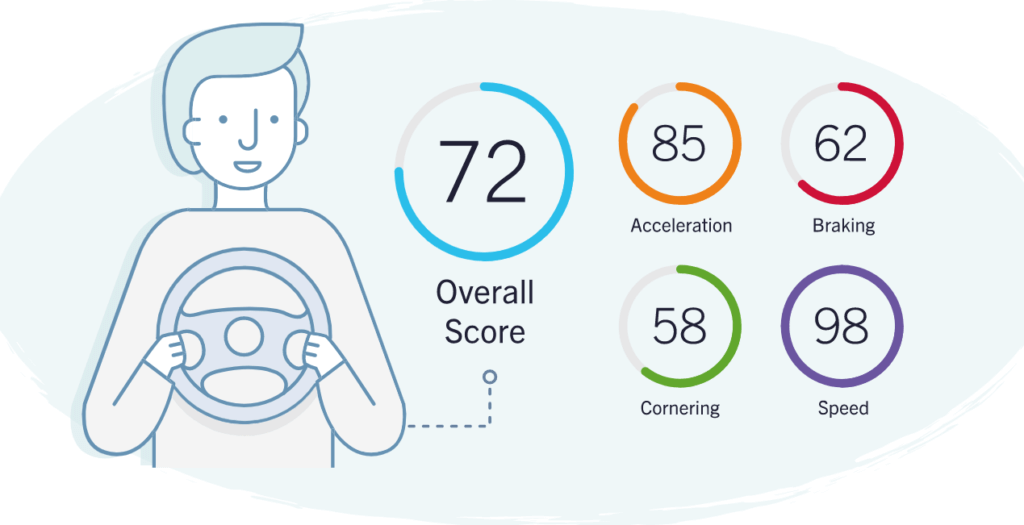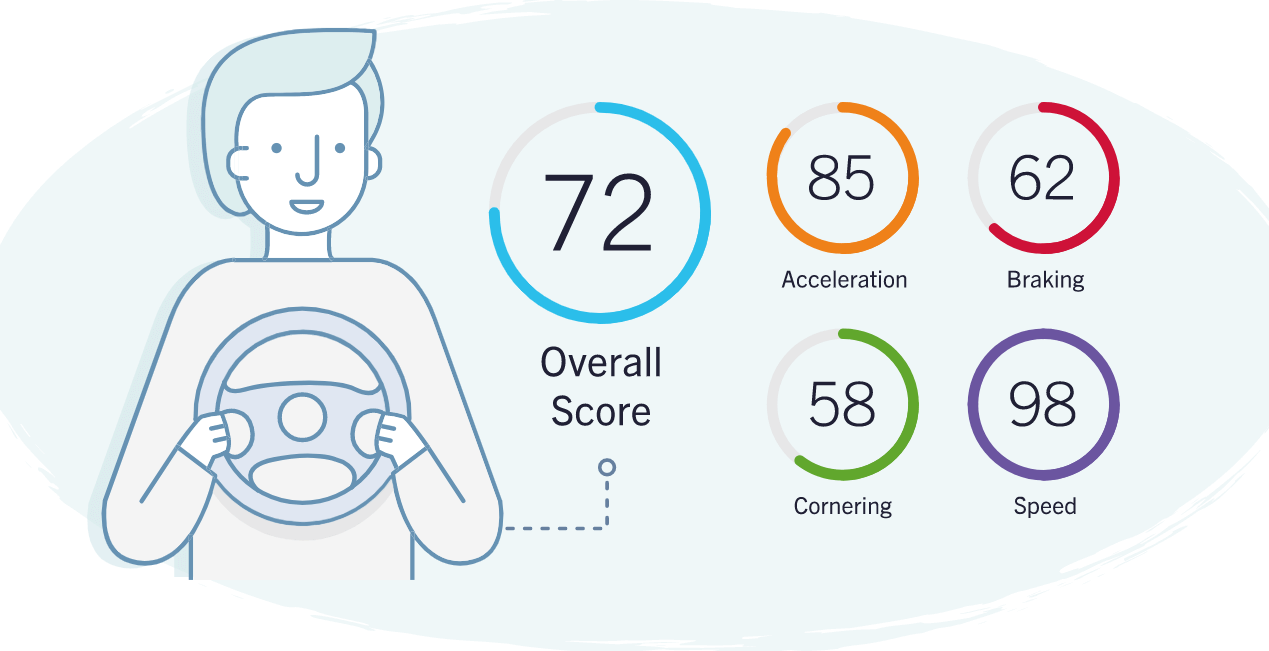Telematics based Driving Score
“You can’t improve what you can’t measure” – Peter Drucker.
Advances in Telematics have enabled us to capture vehicle movements granularly. One of the most spectacular uses of this data is for driving score calculation.
Not too long ago, the above question would have invited subjective responses. “Driving capability” wasn’t seen as a measurable factor. With the introduction of the Driving Score, we have somehow gained some objectivity.
Is it necessary to be able to measure driving? There are quite a few use cases today for driving scores. It can be something as trivial as finding the best driver amongst your colleagues to rewarding better drivers with better insurance premiums, lower violation fines, etc.
Knowing your driving score can also help you improve your driving. So we can safely infer that a mass-scale adoption of Driver Scoring would lead to better drivers, safer streets, and lesser accidents.

How is driving score calculated
Certain behaviors correlate with safe driving and vehicle performance, and longevity. On the other hand, some behaviors are considered detrimental to safety. We need to measure these factors and then use the values to model the driving score on.
Measure Driving Behavior
Measurements could be based on the change in location, impact time, or change in speed.
For example, let’s consider speeding.
- A telematics device can capture vehicle speed data (e.g., A smartphone).
- This data is compared with speed limit data for the location. There are various sources (e.g., Google) that provide this data.
- Continuous speed over the limit would be detected as speeding.
So in this case, we are using location, speed, and time to identify the event.
Transform Driving Behaviors into Scores
Once we can measure events, we can transform them into scores. The scoring could be done either based on fixed parameters (Example: –1 if X% time, the vehicle were overspeeding) or based on relative parameters (Example: How does the driver compare with other drivers whose data is being captured)
Eventually, multiple factor scores are combined to arrive at the overall driving score.
2 types of Driving Scores are popular today:
- Safe Driving Score: This is arrived at by considering important factors for safety.
- Eco Driving Score: This is arrived at by considering factors that are important for the longevity of the vehicle and economizing fuel consumption
The end application determines which driving score is going to be used. For example, a fleet management company may be interested in both scores, while a parent monitoring their teens’ driving may be more interested in the safety score.
Factors Impacting Driving Score
Various organizations use various models for calculating driving scores. While the end data model may be different, the factors that are considered for scoring are pretty much the same:
1. Speeding:
Speeding is one of the most reported causes of road accidents. Thus, it is a crucial factor for calculating driving scores. Continuously breaking the speed limit impacts the driving score negatively.
2. Phone Usage and Distracted Driving:
Phone usage while driving is also a menace that has caused major accidents worldwide. You may be a great driver, but being distracted could be dangerous for you, your fellow passengers, and others on the road. Phone usage is thus considered a negative while calculating the driving score.
3. Acceleration
Acceleration is necessary during driving & thus, on its own, it’s not a concern. However, it is expected that you will increase speed gradually. A high acceleration value implies a rapid increase in speed and is thus a factor contributing to Driving Score.
4. Braking
Like in the case of acceleration, we are also expected to lower speed gradually. Heavy braking could be dangerous as it doesn’t provide reaction time to vehicles behind and may potentially cause collisions.
5. Cornering
Maneuvering bends and corners or cornering is also measured for calculating driving scores. While cornering, the vehicle is expected to slow down and turn with a minimum radius gradually. If the braking is sudden and the turning radius is high, it is inferred that the driver was unable to make the turn correctly, and hence it will lower the Driving Score.
These are not the only factors that are used for driving score calculation. There are various other factors as well. Some of the factors may in fact, be geo-specific. For example, in higher latitudes, adverse weather conditions increase the chances of accidents. In such situations, the driving scores can be stricter than usual.
Uses of Driving Score
The top 3 uses of driving score today are as follows:
1. Fleet Management
Fleet Management companies use driving scores to keep track of the driver’s performances. The score insights can help them appraise drivers more scientifically. In the case of fleets, one vehicle may be driven by multiple drivers for different trips. Thus, trip-based scoring is popular amongst fleet managers.
2. Driving Schools
The driving score is an essential indicator for evaluating student performance in driving schools. The insights derived from the score details are important for the schools, along with the overall score. It can help the school develop custom training plans for students and eventually increase their success rate.
3. Insurance
Some insurance companies have already started using driving scores for evaluating insurance premiums. It is similar to how banks use credit scores for determining the interest rates of loans. A lower insurance premium can be an excellent incentive for driving better.
Useful links to build telematics app
- Company website: https://damoov.com
- Open-source telematics app: https://damoov.com/telematics-app
- Telematics SDK: https://damoov.com/telematics-sdk
- Telematics API: https://damoov.co/api-services
- Developer portal: https://docs.damoov.com
- Datahub: https://app.damoov.comm
- Github: https://github.com/Mobile-Telematics





